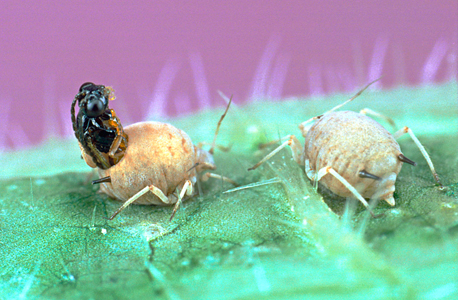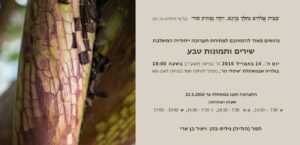Pesach’s just around the corner! Note that during the week of Chol Hamoed (Monday, April 25 and Wednesday April 27), there will be no deliveries.
If you wish to increase your vegetable boxes before the holidays, please advise ASAP.
Open Day at Chubeza:
In keeping with our twice-yearly tradition, we invite you for a Chol HaMoed “pilgrimage” to Chubeza to celebrate our Open Day.
The Pesach Open Day will take place on Wednesday, April 27, the 19th of Nissan, between 1:00 PM-6:00 PM. The Open Day gives us an ideal opportunity to meet, tour the field, and nibble on vegetables and other delicacies. Children have their own tailor-made tours, designed for little feet and curious minds, plus activities and a vast space to run around and loosen up. (So can the adults…)
On the Open Day, we also set up a produce stand where you can purchase all you need to replenish your vegetable supply.
Driving instructions are on our website under “Contact Us.” Please make sure to check this out before heading our way.
We look forward to seeing you!
____________________________________
Tamar, a dear friend and longtime Chubeza member, sent me this invitation to a unique exhibition opening at the Shtilei Har plant nursery in Abu Gosh next week. The exhibition includes nature photos and beautiful poetry written by Tamar. I highly recommend your taking the opportunity to give yourself a gift of a few hours of joy and delight during this labor intensive season. See additional details here:
________________________________________________
Allowing Nature to Take Its Course
This week I want to share with you the dramatic events that having been taking place in the field over the past few weeks. At first or even second or third glance, the field looks peaceful, but if you take a close look, a very close look, using a magnifying glass perhaps, a bloody battle of life and death appears before your eyes. The warring combatants are tiny aphids, parasitic wasps, ladybugs, and of course the green habitants of the field, our vegetables and the neighboring weeds.
The frenzied, changing weather of the past month and a half granted ideal growing conditions for the vegetables. On one hand, we had surprisingly warm weeks followed by heavy rains that watered the earth. This combo caused a growth spurt for many vegetables, as well as the weeds. But its influence was not confined to the plant kingdom alone. The insects in our field have their own say, of course. The aphids, for example, understand the combination of moist and warmth to be an invitation to reproduce and start sucking away at the sap of our plants. The abundant weeds also contribute to the aphid reproduction, and thus at the beginning of last month, we found ourselves facing a serious aphid problem that afflicted the radishes, baby greens, cabbage, cucumbers, coriander, kale, lettuce and many other vegetables.

Upon discovery of the aphid attack, we began to fight back by treating the problem with pyrethrum-based pest control – a concentrate produced from a specific type of chrysanthemum that is lethal to aphids (in addition to other bugs). Yet several days after our attempt at extermination, we began to realize that a defensive event of a different sort altogether was taking place on the beleaguered Chubeza field: instead of the thousands of live aphids, we started seeing “aphid mummies” and understood that unrelated to our activity, the parasitic wasps were now assuming command. We decided to cease all action and allow nature to take its course. Those plants that were lost could not be saved, but those that could muster the strength to fight and overcome the enemy would find the wherewithal to survive. So now is the time to explain the details of the combat strategy (or pest control at its best):
Aphids are tiny bugs (up to 10 mm), usually green or black, sometimes grey. Our problem is that they feed on the sap of the plants, the liquid within the plant tissue. They suck out the sap with their unique proboscis, inflicting great damage upon the plants. Especially since the aphids tend to make the party a family affair. At times thousands of teeny weeny aphids can be sucking away at the sap of one plant, leaving it depleted and sad. Of course, we cannot send you an aphid-contaminated plant, so everybody (except the aphids) loses. The good news is that aphids have a few fierce natural enemies, among them the parasitic wasps and the common ladybug.
The parasitic wasps are tiny wasps which use the aphids as a nursery for their babies. When the wasps meet the aphids, they paralyze them and lay their eggs within the unwilling aphid hosts. The eggs hatch inside and the larvae spin cocoons which swell the aphid’s body. The adult wasp then exits the aphid body, leaving behind a hard brown shell called an aphid mummy. Happily satiated, the wasp rests until a new parasitic wasp emerges, yearning for its own offspring and ready to battle another aphid. In plant nurseries (net houses/hothouses), the farmers usually distribute natural enemies raised in labs to battle the aphid pests. But this cannot take place as a preventative measure, for without aphids, the wasps cannot live.
Here’s a wasp larva emerging from an aphid mummy:

So the field taught us a lesson in nature’s balancing act: when the quantity of aphids goes out of control and takes over the field, parasitic wasps come forth to save the day, doing their jobs and leaving behind many larvae pupating in the petrified aphid mummies. In this particular Chubeza battle, some of the crops were saved, while others had already been damaged beyond repair. Following the advice of Momi, our pest control advisor, we decided to recruit the biological “natural” exterminators from our fields to defend our nurseries. Kale was one of the afflicted crops, but because it was so aphid-infested, the parasitic wasps took over and left an impressive mummy community in their wake. So we gathered kale from the field and spread it among our hothouse cucumbers that were also infested with aphids. We placed the leaves in the shade, as the aphids gather at the bottom part of the leaf, protected from the sun, and we wanted to provide similar conditions in our experiment. We decided to give up on the poor coriander which was also infested with aphid mummies, but we used its potential by harvesting it and disbursing it throughout all the tunnels. At the same time, we conducted a small experiment with a few kale leaves we placed in a covered bucket which we left alone for several days. Within 4-5 days, almost all the parasitic wasps had emerged and a new defense battalion was ready for action.
Once again, we got a glimpse of the tremendous power of nature and realized how important it is to let this power take action. When we purchase parasitic wasps, we buy several hundred to distribute throughout our plant nurseries. By contrast, the natural extermination in the field produces tens of thousands of parasitic wasps. Thus when we brought the kale and coriander into the nurseries, we provided our own homegrown defenders, and so many more of them. They were accompanied by ladybugs that we found in the artichoke bed, at every stage of development: bugs, larvae, pupae. They, too, were taken into the nurseries in order to bring some of the natural abundance present outside into the isolated nursery space. The ladybugs help us fight the aphids as the latter is the ladybug’s favorite dessert. They love noshing on aphids at any given opportunity. Here’s a link to a live look at this meal.
The natural activities taking place in the field, as evidenced in the vast abundance of valiant parasitic wasps and ladybugs, was satisfying and fascinating for us to follow. We felt a little like parents proud to discover how well their child has done in face of a challenge in sports or at school. A feeling that we must be doing something right as farmers if our field acts naturally to overcome the chaos that erupted. It gathered up strength, did what it could and restored equilibrium. We realize that farming is a forceful interference in the natural course of the piece of earth upon which our field resides, and it’s so nice to see that we haven’t undermined the natural forces within it. When they are called to action, they march in tune with the hum of nature, solving the problem much better than we could have.
Five days ago we dispersed these advantageous bugs throughout Chubeza, and now we anxiously await the results over the coming week. We’ll let you know.
And some more pleasant festivities of nature: Mazal Tov and much happiness to Ruthie, our devoted Wednesday volunteer who was rewarded with a new grandson last week. (What fun to have a grandma like Ruthie!) Our loving wishes for you to enjoy many years of grandchildren-spoiling!
In the meantime, wishing you a naturally good week, balanced and productive,
Alon, Bat-Ami, Dror, Yochai, and the entire Chubeza team
______________________________
WHAT’S IN THIS WEEK’S BOXES?
Monday: Romaine/curly leaf lettuce, dill/parsley/cilantro, tomatoes, Swiss chard/kale, cucumbers, potatoes, fava beans, leek/fresh onions, fresh garlic, beets, small boxes only: zucchinni/artichoke.
Large box, in addition: cabbage/cauliflower, radish/turnip, celeriac/parsley root, baby greens (mesclun mix).
Wednesday: zucchinni/artichoke/potatoes, fava beans, leek/fresh onions, fresh garlic, beets, Romaine/curly leaf lettuce, parsley/cilantro, tomatoes, Swiss chard/kale, cucumbers, celeriac/parsley root. a gift: dill/nana (mint).
Large box, in addition: carrots, cabbage/cauliflower, radish/turnip/kohlrabi.
And there’s more! You can add to your basket a wide, delectable range of additional products from fine small producers: flour, fruits, honey, dates, almonds, garbanzo beans, crackers, probiotic foods, dried fruits and leathers, olive oil, bakery products and goat dairy too! You can learn more about each producer on the Chubeza website. On our order system there’s a detailed listing of the products and their cost, you can make an order online now!

